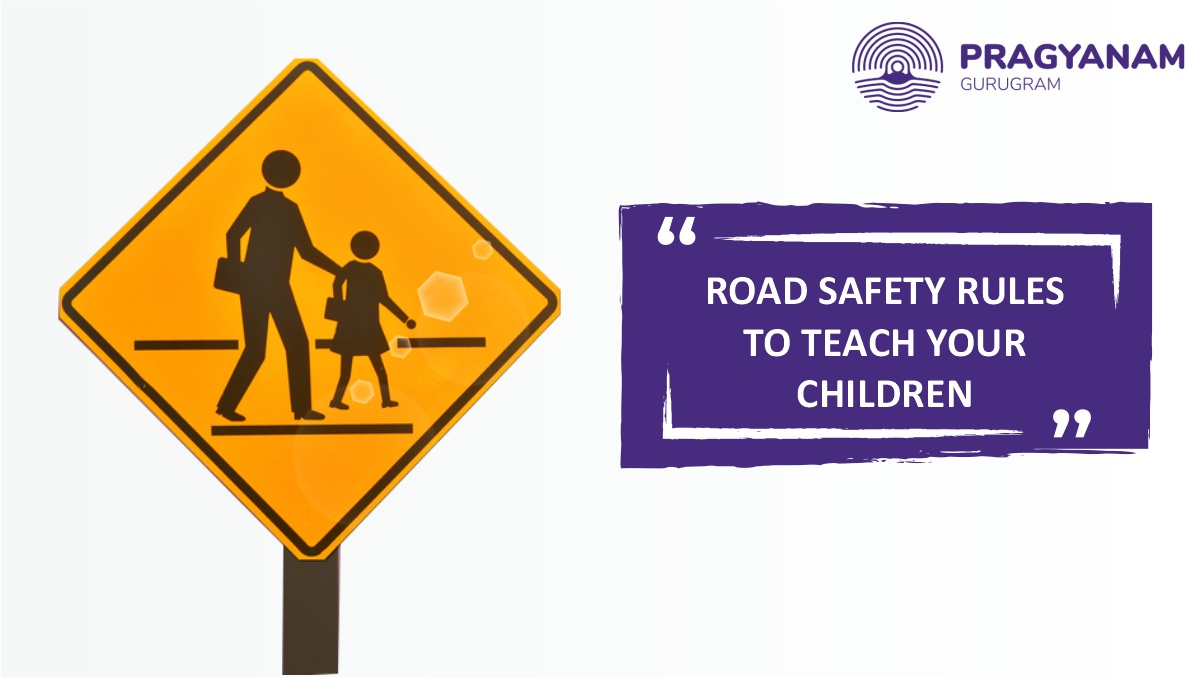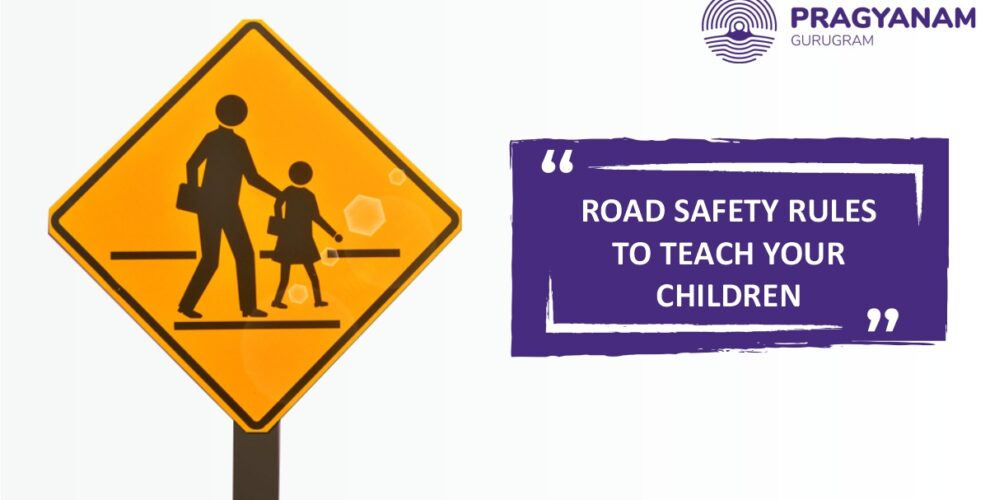
A child is exposed to different kinds of challenging situations at various stages of life, especially when they are left alone. At home, you might be able to devote maximum attention to your children, but as they grow old and start going out, whether for cycling, playing with their friends, or going in the school bus, it becomes difficult to control them. Road safety has a direct impact on a child’s physical and overall well-being, especially in their growing years. Hence, teaching children about road safety is a crucial part of raising them for both parents as well as teachers.
According to a recent report by UNICEF, road traffic injuries are the leading cause of the major accident for children and adolescents aged 5 to 19 years of age across the world. By starting traffic and road safety guidance among children at an early age, you can enable your children to judge vehicle speed, the distance of oncoming traffic, and road crossing, and detect other considerable risks associated with road use in your presence and when you are not around them.
Table of Contents
How to impart road safety knowledge among children under 5 years of age?
As a parent, you do not have to give serious lectures and demonstrations to your child to teach them road safety rules. Children learn best by observing the adults around them. To begin with, you can talk to your children and ask them questions about roads, road signs, the significance of traffic lights, when to cross the road, and the like. For little ones below 5 years of age, here are a few ways you can practice:
● Hold your child’s hand while walking on the roads and talk to them about the importance of holding the hands of an adult while they are outside.
● Take your child’s opinion in choosing safe places to play.
● When you take your child for a drive, make sure you wear your own seatbelt, obey all road rules, drive courteously, and be a good role model.
● Explain to your child the reason why you have taken certain action when you are near cars and ask them what you should do when you must cross the road, when should you take the crossing, what does each colour in traffic lights stand for, and other questions. While you may be the decision-maker in each of these situations, you are still teaching them important lessons in a subtle and fun way.

Important road safety rules for children
1. Understanding the significance of road safety signs
Safety signs are the first and foremost aspect of road safety that you should teach your child. You can buy a chart of all pedestrian signals, traffic light signals, and other basic signs and sit with your child to explain the meaning of each sign. When you are outside with your child, you can teach them the difference between the red, yellow, and green signals during traffic and show them various pedestrian signals on the roads while making them understand what they stand for. Knowing the road safety signs will establish a strong foundation for your child for a long-running education and expose them to a world beyond their own home.
2. Road Crossing: Look both ways before moving ahead
Parents and other adult members of a family can get apprehensive at the thought of the child crossing the road because children can often make unpredictable moments which can expose them to various dangers when on road. As a rule of thumb, you must not allow your child to cross the road without any adult supervision, especially at early stages. Give them a proper explanation of the risks associated with road safety, why they should not run on the road, how to keep them safe when they are outside, and what is the right way of crossing a road. And while you are teaching them, make sure you follow the rules and lead by example. For instance, the basic rule of road crossing is to look both ways. Before teaching them the theory, make sure you show them how it is done and make them understand why it is important to check the moments on both sides of the road before crossing.
3. Bicycle safety rules
All children love their bicycles! But as a parent, you may not always be around them when they take their cycle for a ride around the neighborhood. That is why it is imperative to teach them basic bicycle riding rules to ensure their safety. Here are the rules that every child must follow when they are going out cycling:
☑️ Helmet is mandatory: We often miss this basic rule of thumb for little ones and focus on teaching them how to behave outside. However, you must never allow your child to go out on their bicycle without a helmet. Statistics have proven that by wearing this simple accessory, we can reduce the risk of debilitating head injuries among children by almost 70%.
We often miss this basic rule of thumb for little ones and focus on teaching them how to behave outside. However, you must never allow your child to go out on their bicycle without a helmet. Statistics have proven that by wearing this simple accessory, we can reduce the risk of debilitating head injuries among children by almost 70%.
☑️ Safety pads: Knee and elbow pads are often forgotten but are equally important for your child’s safety especially when they are learning to ride a cycle.
☑️ Riding in safe zones only: Children may be very excited to move around with cars on the roads, but you must make a rule at home to allow them to ride their bicycles only in cycle lanes and safe zones like parks. During monsoon season or when the roads are wet & slippery, cycling should be completely avoided for children.
☑️ Bicycle maintenance: Tyres, brakes, gears, and other parts of the cycle require frequent checks to avoid malfunctioning parts or flat tires which can put your child at great risk. You must check the bicycle conditioning from time to time to avoid breakdowns and skidding.
4. Set in car and bus rules for your child
Children are impatient and excited in nature and can be restless in moving vehicles which can lead to bumps and injuries. Therefore, it is important to set some ground rules for your child for both car and bus rides. When in the car, make sure your child is wearing the seatbelt. You must also teach your children to not move their hands or head or any body part outside the window. There have been innumerable road incidents because of this carelessness that can lead to serious injuries for life or in severe cases, even death.
When it comes to school bus rides, you may not be able to monitor your children all the time. Even if you may have chosen the top school for admission for your children, there are basic bus safety rules that you must teach the little ones to ensure their safety. Warn your children against standing near the door of a moving bus and moving around the aisle of a moving bus. A slight change in the momentum of the bus or sudden brakes can cause them to lose balance and fall leading to injuries.
Whether a bus or a car, teach your child about blind spots and how to avoid them. When a child is getting off a car or a bus, teach them to look both ways before they open the door of the car or step down from a bus.
Conclusion
With each passing year, traffic is increasing worldwide. By teaching your children about the importance of road safety and rules to follow, you can make them aware of the risks and preventive measures to act safely and responsibly. For children, conditioning is the best way to teach them about anything. So set an example by following the rules you teach them and make them realize the seriousness of road use. At Pragyanam school, we provide them with a holistic learning experience from subject-specific textbooks to life lessons that help them at every stage in life. Through dedicated classes and special workshops, we are focused on setting the right foundation for our students to prepare them to be good decision-makers, responsible, and smart thinkers to tackle any situation independently.








Leave a Reply